Inside an Oklahoma Amish Farmhouse (20 Photos)
This latest Amish home is found in a small community in Oklahoma, a state which has long had an Amish presence. This settlement is at Welch (Craig County), one of several small Amish locations in the Sooner State.

This community was founded in 2010, and listed at just 80 residents, the departure of the family selling this home will represent a significant percentage drop in the community’s size. This no doubt a case of this community being too small (and not growing, even shrinking) to attract an Amish buyer. That’s why properties like this get listed online for the non-Amish market.

I don’t believe we’ve looked inside a home in Oklahoma yet. Another thing making this property noteworthy is the large piece of land in the deal – 153 acres.

An Amish property of that size would be rare in the East, or most other Midwestern states (I’m not sure Oklahoma feels like a Midwestern state – or a traditional “Southern” one for that matter, but I’ll leave that topic aside for now). Here’s the property description:
This 153-acre farm is perfect for any homesteader looking to settle down in the Amish tradition. Cross-fenced, it’s ideal for grazing and livestock rearing. There are multiple ponds on the property, offering plenty of freshwater resources throughout the year. With its rolling hills, picturesque pastures, and peaceful setting, this farm makes a great opportunity for anyone looking to get their start or expand an operation.
The home is a big two-story home that has 4 bedrooms and could be more if finished upstairs. The kitchen has tons of cabinet space and feels very open. Several outbuildings can be found just outside the backdoor of this two-story home. The barn has been pieced together but still serves its purpose when it comes to the animals. The shop to the west of the house is one that will be very useful when it comes to storage. Behind the barn is where you can find the corral that will be very useful for sorting the animals and getting them taken care of. The cross fencing in connection with the pond placement allows you to run more animal units and still keep the land fresh by rotational grazing.
If you would rather till the land up and plant something, there is plenty of good soil for that, and is considered prime farmland. Touring around the land it is easy to appreciate the beauty that is all around you. From the tops of rolling hills to the gentle waters moving down the creek that cuts through the center of the acreage.
That open caught my eye: “settle down in the Amish tradition.” They’re telling you the family is Amish without exactly saying that.
Let’s have a look inside. These photos aren’t the best-lit, but that just fits with the feel of the place as an Amish home. First the kitchen with wood cookstove.

The same stove, looking in the opposite direction. See the hanging light? That appears to be a battery-powered light common with many Amish. Also note the hangers for exterior wear right behind the stove. I imagine that is a good place for drying them and/or putting on a toasty coat when heading out on a cold prairie winter day.

And one more view back into the kitchen. Looks like a small blackboard on the wall there. Amish don’t homeschool much, but I wonder if any of that happened here, especially given that this is such a small community.

There is also this refrigerator with the propane tanks likely used to power it visible to the right. This looks like some sort of add-on mud room that the family probably attached to this farmhouse.

Crib by the door. That actually looks like they don’t open that door much by how the crib is placed.

A view into a wide spacious family room. Heating stove to the right. Going by the exterior windows on the left, this looks like it may have also been an add-on.

And another view of the same space.

There are several bedrooms, in various states of completion. Amish families who aren’t in a position for whatever reason to fully complete their homes seem to leave the bedrooms for last. This would make sense as they are usually mostly upstairs (an exception being the parents’ bedroom which is typically on the ground floor).


I’d probably make my bed if I were having real estate photos done, but I also appreciate the laid-back vibe.

Here’s a ground-floor bedroom.

Let’s have a look outside.
Some of the outbuildings. At first I thought that was a church wagon to the right (used to transport benches between homes for church gatherings), but the more I look, it looks more like some sort of farm implement.


Like mentioned above, there is a lot of land here. There are many more photos of the 153 acres at the listing link above.


As noted in the description, there are multiple ponds on the property. This looks like it might be the largest.

So what is the price for this property with a four-bedroom, one-bathroom, 2500-square-foot farmhouse on 153 acres?

This is one of the more expensive Amish properties we’ve looked at, but that’s unsurprising given the large tract of land. It’s listed at $725,000. The listing agent is Andrew Kattenberg of L2 Realty.




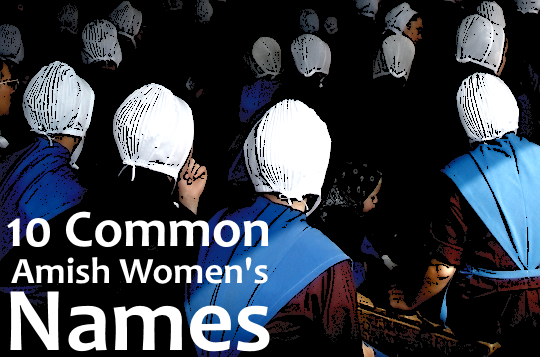

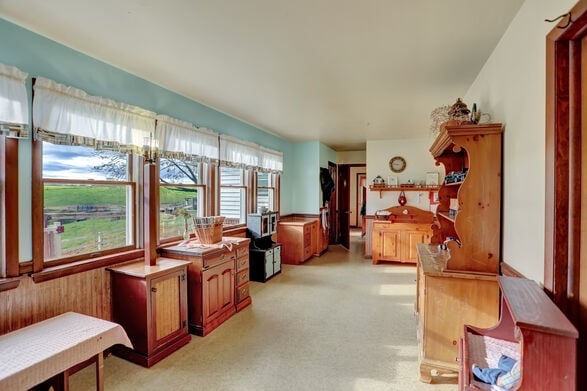
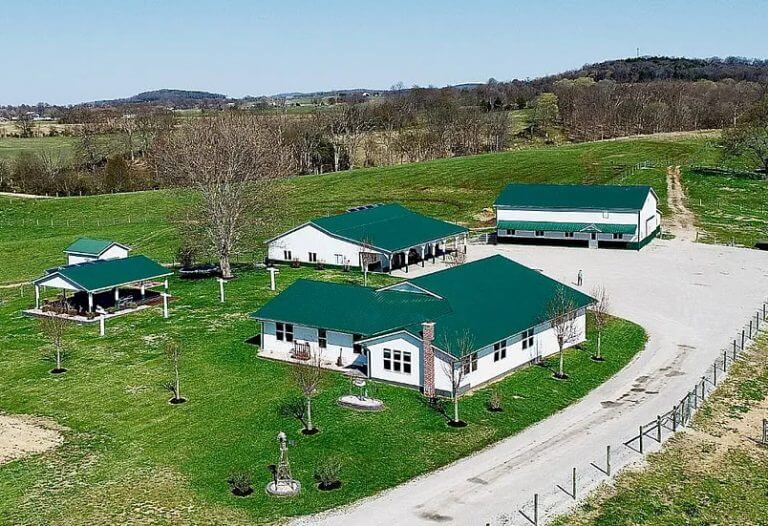
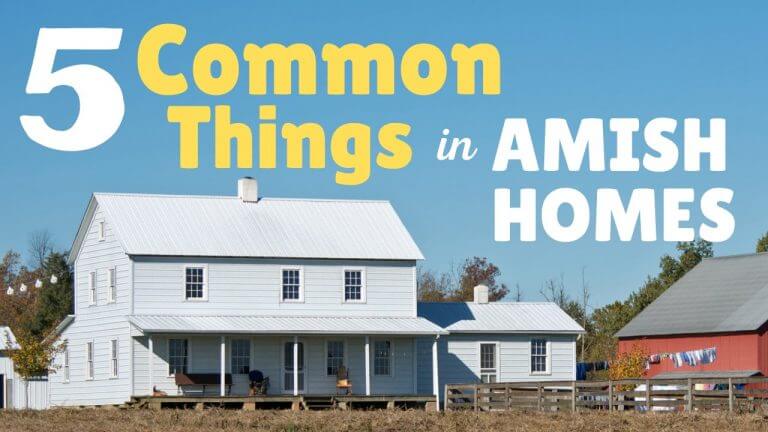
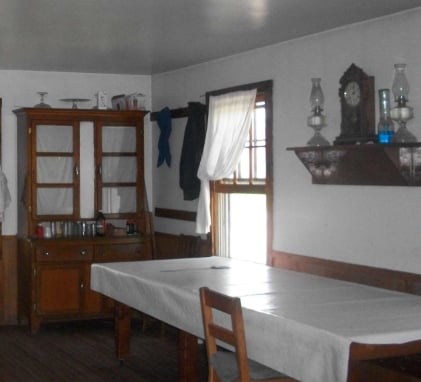

The “Settlements” book says this settlement was founded by a Bishop from Bethany, Missouri and his 3 married sons. As of the publishing of the book there were 13 families. The main occupation is breaking and shoeing horses and there is one repair shop.
Thanks again for adding that detail.
Leaving
Hello Erik,
Whether a family is Amish or English, leaving a homestead always causes me to think of how earlier plans may have been unfulfilled. I like your point, that if the property is being marketed to non-Amish, then it’s possible the Amish community is not expanding. Why?
Happy writing, Jim
It’s always a good question, it’s about failure to attract/retain people in the area and I think it often has a lot to do with distance from other communities (making it harder to maintain ties with home settlements and maybe more importantly, for youth to find marriage partners) as well as lack of economic opportunities.
Some Amish also may intentionally settle in more remote areas in order to maintain the small community dynamic (eg those leaving larger, “faster” communities). The book by Luthy on failed settlements goes into some fascinating detail on why different settlements have failed. He did identify the most common reasons, maybe I should do a post on that at some point.
We don’t homeschool but we have a blackboard! It’s great for the kids to doodle on, and practice their writing or do basic operations! My kids are now 11 and 14 and still use it occasionally for their homework – or to play games like pictionnary or hangman! It spares a lot of paper too.